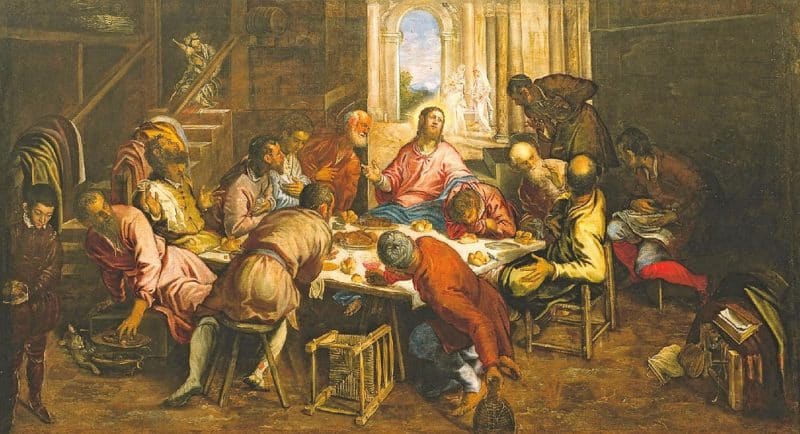Professor of Historical Theology Fr Thomas O’Loughlin from the University of Nottingham reckons he has cracked the problem of the most baffling piece of Scripture in the New Testament, the Lukan account of the Last Supper.
He presented his essay treating the topic in a free lecture held at the St Columba Centre in Ponsonby on July 2.
He said the standard version of Luke’s account (Luke 22: 17-20) is where Jesus takes the cup, tells the disciples to divide it among them, then takes the bread, blesses it, gives it to his disciples and then takes another cup after the supper, blesses it and gives it to the disciples.
“That is our standard version of Luke and it bristles with problems. If we look at every other account: Paul, Mark,
Matthew [or] Didache, which comes from the first century, there is only either a loaf under cup or a cup under loaf,” he said.
Professor O’Loughlin said there are no fewer than six variant forms of Luke’s verses in Greek and other languages, two of which fall in the broader category of longer text and four in the shorter text.
“Not only is there a vast array of solutions as to which is the ‘original’ text but, despite well over a century of ingenious proposals, no solution has ever been able to claim dominance,” he said.
Professor O’Loughlin said his solution relies on a muddled model of church evolution.
“The curious thing is . . . scholars were each saying exactly the same phenomenon: that you have to look at every bit of evidence as precious pointers to the living reality in the churches,” he said.
“Once you find variance, you should never treat a variant as anything other than what some Christian at some point believed the Gospel contained. So, you should treat every variant as precious evidence to actual variation,” he said.
But how does one reconcile differing versions of the same Supper?
Professor O’Loughlin explained that the earliest Christians used the Gospel to explain their practices or liturgy.
“If we think of the stories of the Last Supper as neither a direct echo of liturgy nor as a detail about the final hours of Jesus, but as part of a myth explaining the churches’ practice of eating together, then just as we have a variety of practice, we should expect that that variety to be echoed in the stories,” he said.
He suggested that the Gospel according to Luke was a “living text” (a phrase coined by theologian David Parker) with two versions of the Supper story (loaf/cup or cup/loaf) depending on which community he (Luke) was with.
“The text had living fluidity, mirroring the variations in practice found in churches: I can see no reason why Luke himself could not have used both forms, depending on the community in which he was participating. Then, gradually, some harmonisation developed across this central story of those communities . . . ,” he said.
The concern for harmonisation came around the later second or early third century, he explained, when inconsistency in ritual was seen as a mark of heresy.
“The result of this process—the Majority Text—was a muddled text that owed more to ritual harmonisation,” he said.
He said by the time that long text was put together, the Gospel was a sacred book.
“As sacred book, it has to be explained. When those variants were being used, it was Christian practice that needed to be explained using those texts,” he said.
“By the middle of the third century, the Gospels were a problem for Christians to understand. They moved from being helps to being academic problems.”

There is one fundamental most theologians miss on the subject of Eucharist.
It is that the Eucharist was instituted before Jesus died.
It was not instituted after he rose from the dead.
This is important for the priesthood to recognise and for the very reality of consecration.
The other fact frequently ignored is that of the Real presence.
In today’s world, it has become an academic narrative, instead of a mystical experience.
Leaders in the church should not be frightened to challenge the faith of the congregation.
Congregations should be told of the miracle of Santarem, the miracle of Lanciano.
With the advent of TV, the pressure is put onto the priest to keep it all to “scripture'”.
So miracles and priceless treasures of the faith are simply sidelined. Children are not fed.
Very sad.